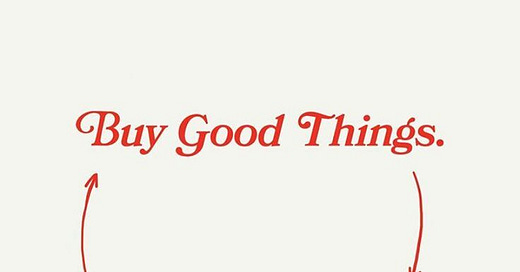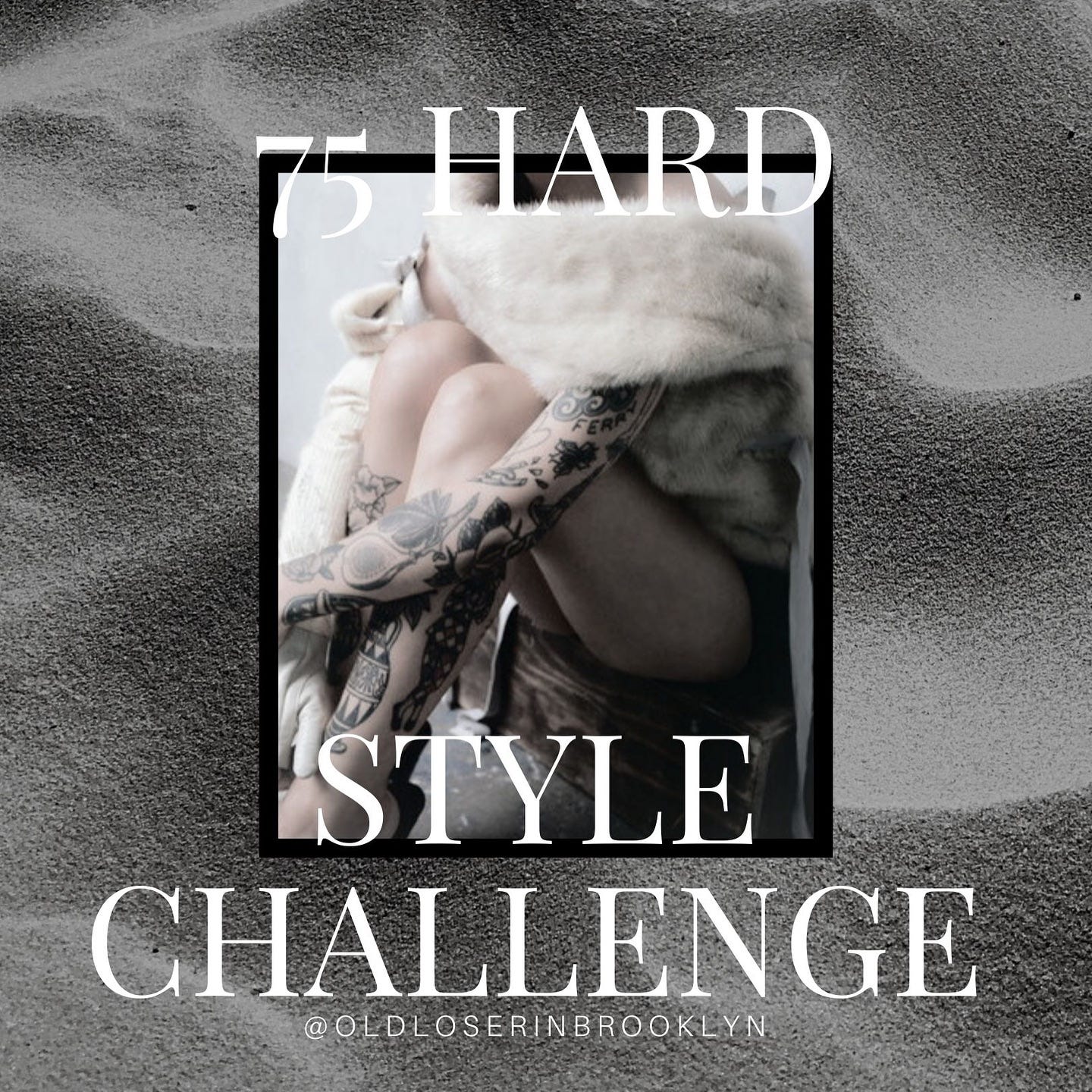It’s been a year since our fave, Mandy Lee, kicked off her 75 Hard Style Challenge. As we revisit our wardrobes to try to heal our relationship with clothing, one key pillar of the challenge is getting a refresh: instead of not buying new clothes altogether, many are trying a low buy instead. This entails the same intent, which is to buy less, but with some built-in flexibility.
This low-buy vs. no-buy debate has us in a bit of an existential crisis. Is the most sustainable choice to go all-in on a strict no-buy approach? Or is a low-buy strategy more realistic than quitting consumption cold turkey?
No-Buy vs. Low-Buy
First, let’s break down our two pathways. A no-buy year is the strictest route, cutting out new purchases entirely, while low-buy periods allow for some mindful spending.
Each comes with its benefits and challenges:
No-Buy
Pros:
Saves more money faster
Forces creativity with styling and re-wearing
Foster a deeper appreciation for what you already own
Eliminates consumption entirely
Cons:
Can feel restrictive or unrealistic long-term
Risk of FOMO, especially with trends and sales
Requires a lot of discipline and planning
Low-Buy
Pros:
Allows more time to become accustomed to lowered consumption
Allows for thoughtful, high-quality investments
More sustainable than constant trend cycles
Easier to stick with long-term
Cons:
Risk of justifying too many “exceptions”
Slower financial savings compared to no-buy
Gray areas - what really counts as necessary?
Lessons From Our Community
To dig a little deeper into each of these anti-consumption approaches, we turned to our SB community. We learned that many find the no-buy approach too rigid in today’s economy. Folks feel that this can lead to a cycle of deprivation and binge-buying. Instead, most people believe in reducing consumption as much as possible rather than cutting it off entirely.
A low-buy year allows for mindful investments, including shopping from small, ethical, and sustainable brands.
When asked about their top motivations for a low-buy or no-buy year, people cited financial savings, breaking free from consumerist habits, valuing their clothes more, and reducing textile waste sent to other countries.
Impulse shopping ranked as the biggest hurdle, followed by staying creative with personal style, balancing support for susty brands, and dealing with FOMO (especially when not all vintage pieces can be sourced again!).
With these insights in mind, here are some tips to help you stay on track:
Identify Your Why: Reflect on why you want to cut back on spending. Understanding your deeper motivation will help you stay committed when temptation strikes.
Set Realistic Boundaries & Goals: Decide what’s off-limits and where you’ll allow some flexibility. Are you avoiding all new purchases or just cutting back on impulse shopping? Clear guidelines will make the journey more manageable.
Try the 75 Hard Style Challenge! Head to Mandy Lee’s challenge breakdown on Instagram and Substack to help root your no-buy or low-buy period in creation and fun!
Use a Pause List for Non-Essentials: When you feel the urge to buy something, add it to a pause list: a running note on your phone or journal. Give yourself 30 days to reflect on whether you truly need it. Ask yourself questions like, How useful will this be in my daily life? Am I shopping to fill an emotional void (boredom, stress, validation)?
Repurpose, Repair, Borrow: Instead of buying new, repair broken items, upcycle old clothes, or borrow from friends and local lending groups.
Join Communities or Accountability Groups: There’s power in collective motivation. Join online conversations around lessened consumption, follow hashtags on your fave social networks, or start a group chat with other friends who aren’t buying.
Celebrate Milestones (Not by Shopping!): Instead of rewarding yourself with a purchase, find non-material ways to celebrate progress. Go for that hike you’ve been putting off, treat yourself to a spa day at home, write in a gratitude journal, or spend time with your loved ones.
At their core, both no-buy and low-buy approaches challenge the systems that encourage endless consumption. We can’t keep consuming at the rate most of us are, and cutting back isn’t just good for our wallets, it’s necessary for our planet. When we actively step away from buying new things, we see how much of our spending is driven by habit, marketing, and social pressure rather than actual needs.
Both approaches force us to rethink our sense of self-worth outside of material possessions. The less we consume, the easier it becomes to imagine a world not dictated by fast fashion cycles, artificial scarcity, and the constant pressure to buy. This shift in perspective is essential to envisioning a world beyond capitalism. The less we rely on material things for happiness, the more space we create for experiences, relationships, and deeper fulfillment.
Are you doing a no-buy or low-buy year? What’s been your biggest takeaway so far? No matter where you choose to start, starting is the first step, and for that, we’re so proud of you!
Did you miss our last article? Read “5 Pieces Using Innovative Eco-Friendly Materials For Your Winter Wardrobe” here!









Thank you for sharing! I did a low-buy year last year and I found it very helpful in forcing myself to think more about what I buy and try to wear my clothes more creatively. The saving money faster is important since I realized I would easily spend $2,000 or more a year just buying clothes I thought were trendy and now I don't feel like my finances are held hostage by my need for shopping.
thank you for this thoughtful break down ! i find myself spiraling between no-buy and low-buy and then panic browsing fast fashion, filling my cart, having a moment of WTF AM I DOING!?, slamming my laptop shut and feeling sick about it. low buy resonates v much with this adhd girly who struggles with planning, self-discipline and impulse control :)